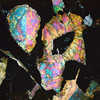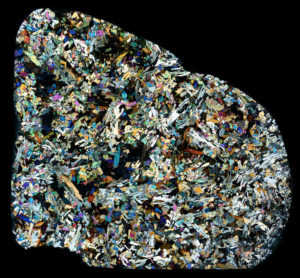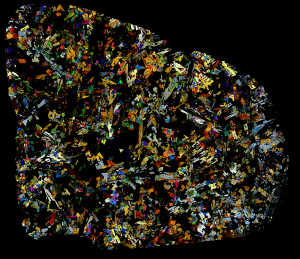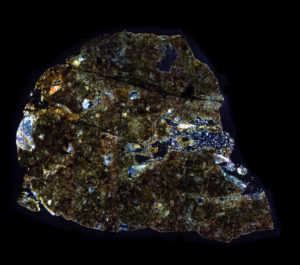This is a thin section specimen of the D’Orbigny Meteorite. The thin section photographs were taken under cross polarized light using two linear polarizing filters. The first set of pictures is from a nicer CCD and microscope. For a good link to more Angrite pictures, see here. Angrites always look spectacular in polarized light.
Link to pictures of the main mass.
VERSION 1 (Nikon D810)
View and interact with image on Gigapan | View Panorama with krpano
Purchase Prints
VERSION 2 (decent CCD and microscope)
View and interact with image on Gigapan | View Panorama with krpano
VERSION 3 (not as good)
View Meteorite Thin Section Panoramas:
View and interact with image on Gigapan | View Panorama with krpano





